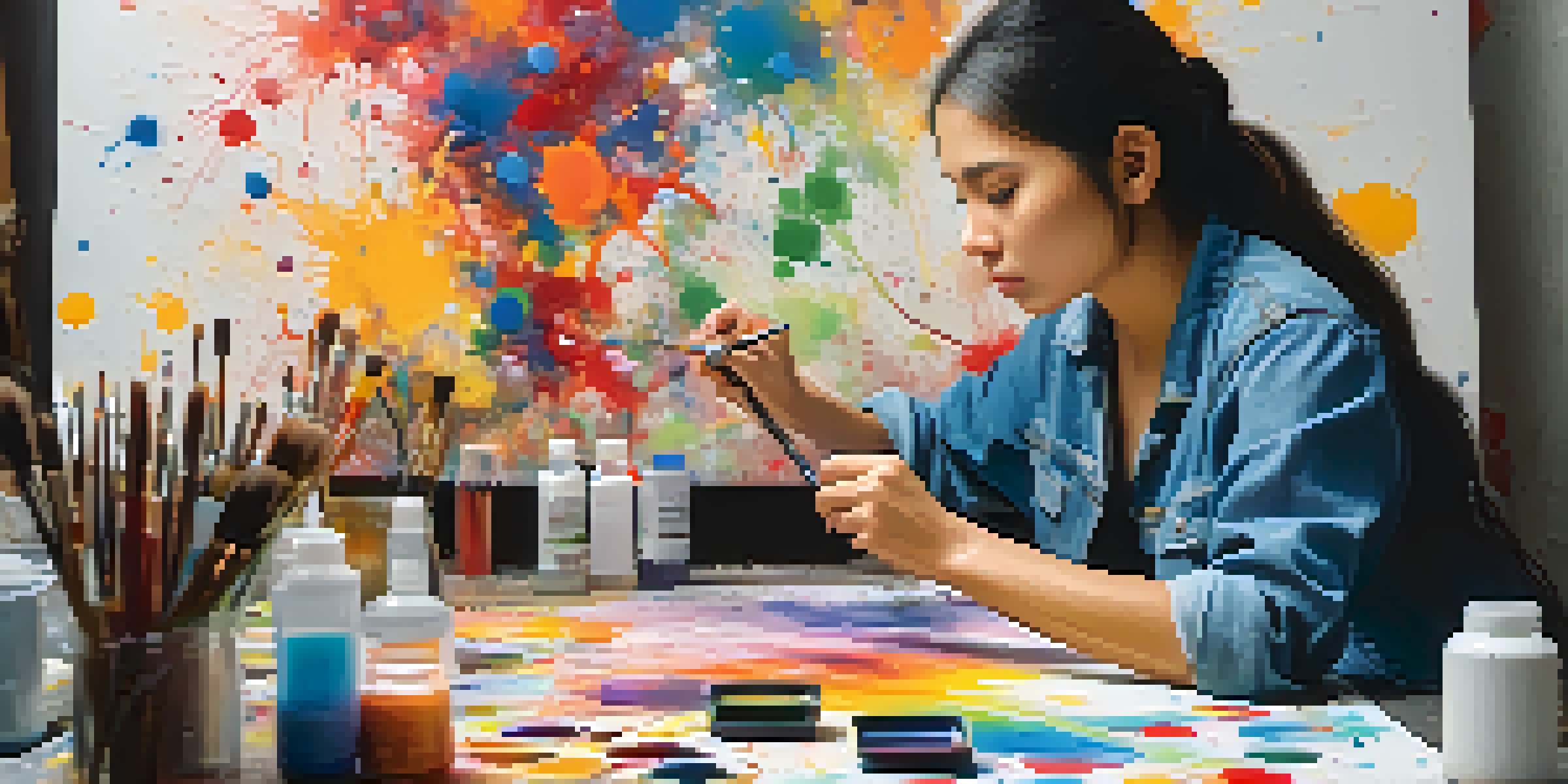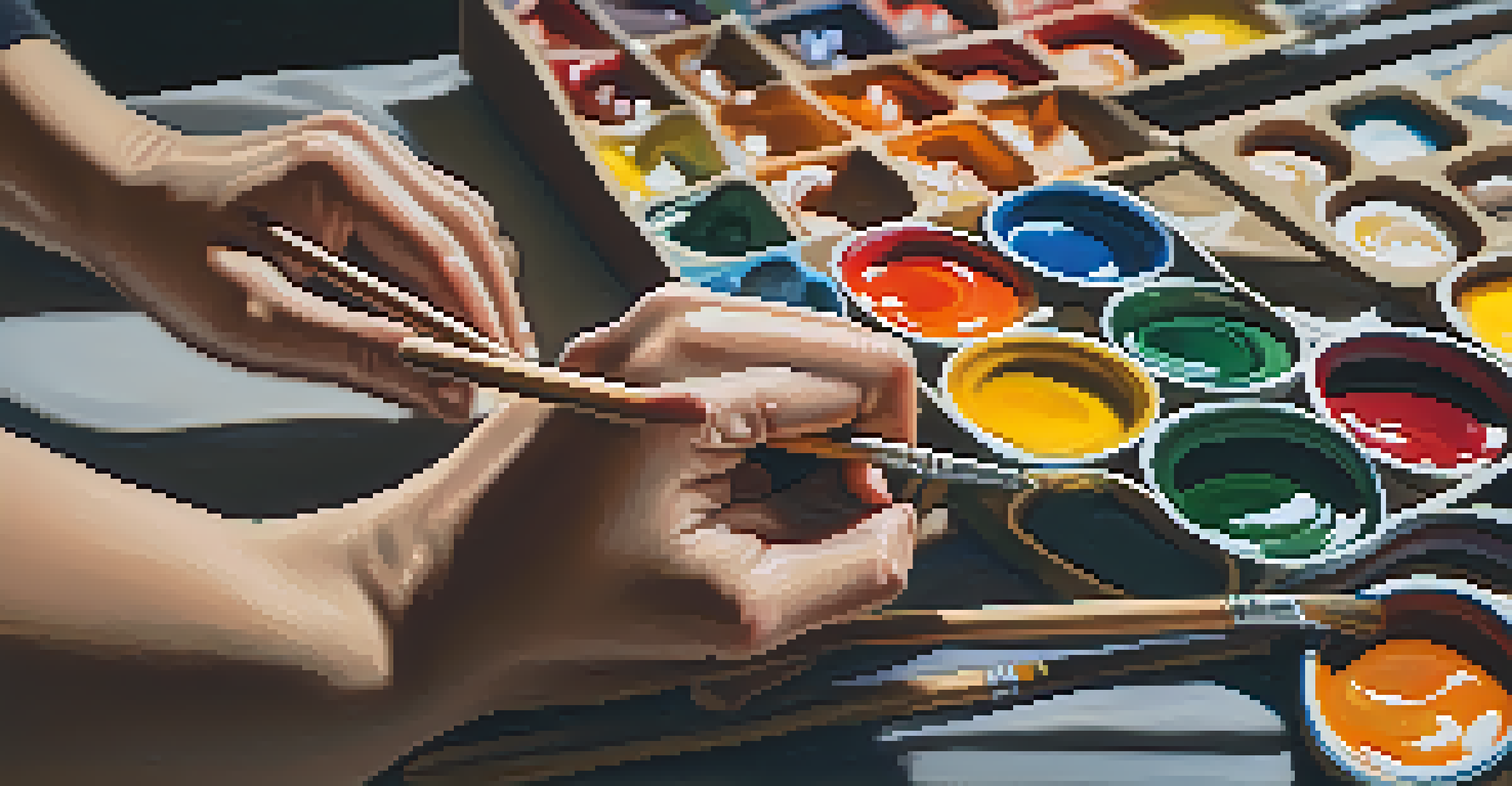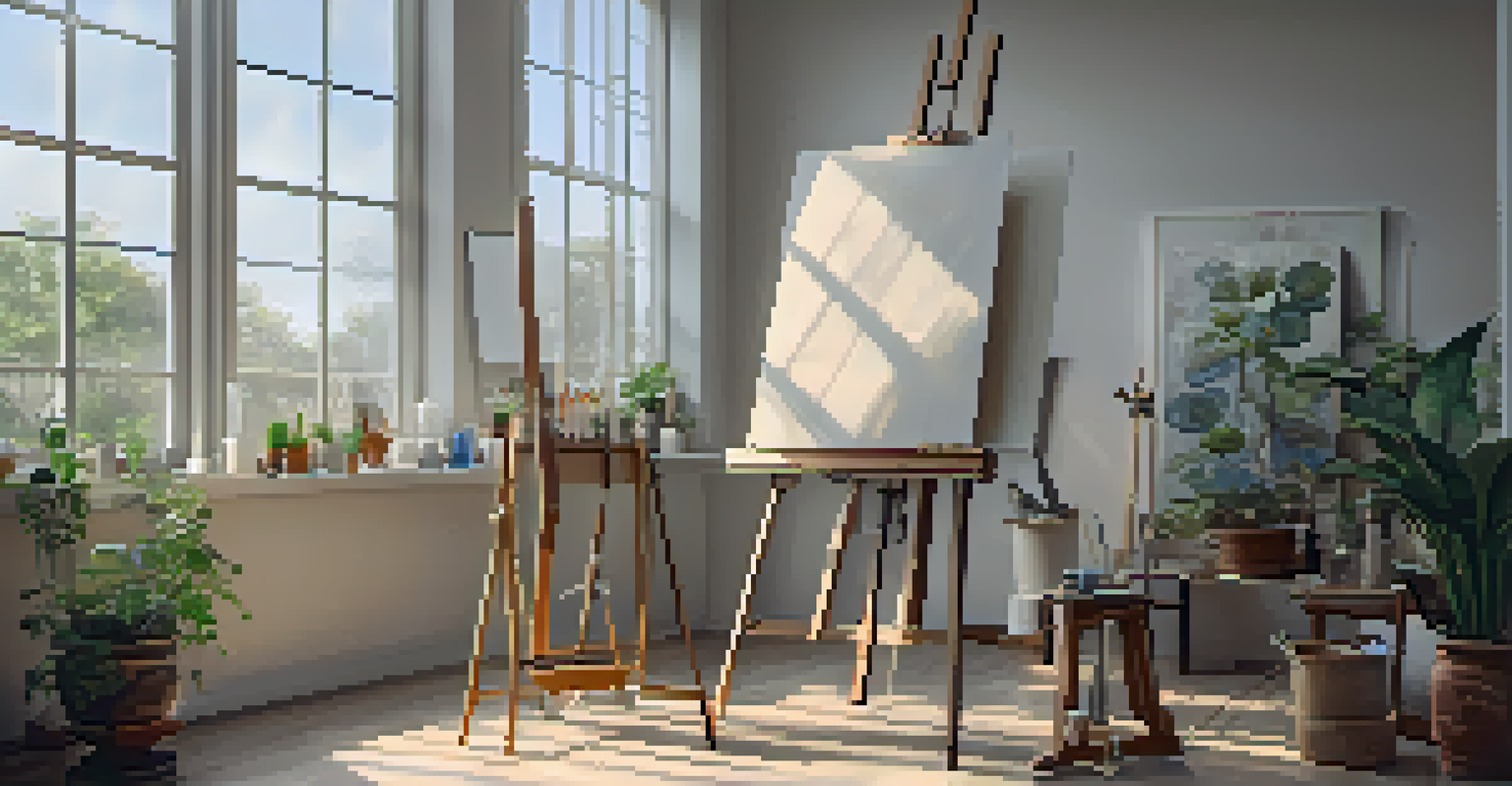The Psychological Flow State in Art Creation

Understanding the Flow State in Creativity
The flow state is a psychological phenomenon where individuals are fully immersed in an activity, often losing track of time and self-consciousness. This state is characterized by intense focus, effortless involvement, and a sense of enjoyment, making it particularly relevant in creative fields like art. When artists enter this flow, they often produce their best work, characterized by innovation and authenticity.
Creativity is allowing yourself to make mistakes. Art is knowing which ones to keep.
Imagine a painter so absorbed in their canvas that they forget the world around them; that's the flow state at work. It's not merely about being busy; it's about being deeply engaged with the task at hand. This deep engagement can lead to breakthroughs in creativity that might not occur in a distracted or rushed mindset.
Research shows that achieving flow can enhance not only the quality of art but also the satisfaction artists feel in their work. By understanding and cultivating the conditions that foster flow, artists can unlock their full creative potential. So, how can one achieve this coveted state during art creation?
Key Conditions for Achieving Flow in Art
To tap into the flow state, certain conditions must be met. One of the most crucial is the balance between skill and challenge; tasks should be neither too easy nor too difficult. For example, an artist might find flow while creating a piece that challenges their skills without overwhelming them, like trying a new technique that feels just right.

Another key factor is clear goals: artists need to have a clear vision of what they want to achieve. Whether it's completing a painting or mastering a new medium, these goals serve as a roadmap toward flow. When artists know what they’re aiming for, they can direct their focus more effectively, making it easier to get lost in the process.
Flow State Enhances Creativity
Entering a flow state allows artists to achieve deep engagement, leading to innovative and authentic work.
Finally, minimizing distractions is essential for entering a flow state. Creating a dedicated workspace, turning off notifications, or setting specific time blocks for art can help artists immerse themselves fully. When all these elements come together, artists are more likely to experience that magical flow state.
The Role of Emotions in the Flow State
Emotions play a significant role in achieving and maintaining flow during art creation. Positive emotions, such as joy and excitement, can enhance focus and creativity. For instance, an artist who feels inspired is more likely to dive deep into their work and stay in the flow longer.
When we are in flow, we are most ourselves; we are the person we were meant to be.
Conversely, negative emotions can disrupt the creative process and pull an artist out of the flow state. Stress, self-doubt, or anxiety can create barriers that prevent full immersion in the art-making experience. Recognizing and managing these emotions is crucial for artists to maintain their flow.
Mindfulness practices, such as meditation or deep breathing, can help artists cultivate positive emotions and reduce negative ones. By fostering an emotional environment conducive to creativity, artists can enhance their chances of achieving flow and producing their best work.
Flow and Artistic Techniques: A Symbiotic Relationship
Specific artistic techniques can either facilitate or hinder the flow state. Techniques that encourage spontaneity and exploration, such as free painting or improvisation, often lead to a more profound flow experience. These methods allow artists to let go of inhibitions and embrace the creative process without overthinking.
On the other hand, rigid techniques or overly structured approaches may stifle creativity and make it harder to enter flow. For example, an artist strictly adhering to a detailed plan might find themselves bogged down by constraints, leading to frustration rather than flow. Balancing structure with freedom is crucial.
Environment Influences Flow
A well-organized and inspiring workspace can significantly enhance an artist's ability to enter and maintain flow.
Ultimately, finding the right techniques that resonate personally can help artists tap into flow more easily. Experimenting with different methods can reveal what works best, fostering a more enjoyable and productive creative experience.
Flow State and Artistic Identity
The flow state can significantly impact an artist's sense of identity. When artists experience flow, they often feel a sense of fulfillment and alignment with their creative selves. This connection can reinforce their artistic identity and motivate them to pursue their craft further.
However, the pressure to achieve flow consistently can lead to frustration and self-doubt. Artists may start to question their abilities if they struggle to enter flow regularly. It's essential for creatives to understand that flow is not always attainable and that it's okay to have periods of less productive creativity.
By embracing the ebb and flow of their artistic journey, artists can cultivate resilience and a deeper understanding of their creative identity. This acceptance allows them to navigate challenges while appreciating the moments of flow when they occur.
The Impact of Environment on Flow in Art Creation
An artist's environment greatly influences their ability to enter a flow state. A cluttered or distracting space can hinder focus, while an organized and inspiring environment can facilitate immersion. For instance, natural light, inspiring visuals, or even calming music can create an atmosphere conducive to creativity.
Personalizing the workspace to reflect one's artistic style can also enhance motivation and comfort. Whether it’s displaying favorite artworks, using comfortable furniture, or incorporating meaningful objects, a tailored environment can help artists feel more connected and engaged with their work.
Emotions Impact Creative Process
Positive emotions foster flow, while negative emotions can disrupt it, making emotional management crucial for artists.
Ultimately, creating a nurturing environment that minimizes distractions and enhances inspiration is key to achieving flow. By paying attention to their surroundings, artists can cultivate a space that supports their creative process.
Tips for Cultivating Flow in Your Art Practice
To cultivate flow in art creation, start by setting clear, achievable goals for each session. These goals should be specific enough to guide your work while allowing flexibility for exploration. For example, rather than aiming to finish a painting, focus on mastering a specific technique or color palette.
Incorporating regular breaks can also help maintain energy and focus. Stepping away for a few minutes can rejuvenate your mind and help you return to your work with fresh eyes. This practice not only prevents burnout but can also spark new ideas and perspectives.

Finally, be patient with yourself. Flow is not a constant state, and it's essential to embrace the ups and downs of the creative process. By nurturing a compassionate attitude toward your artistic journey, you can create a more fulfilling and sustainable practice.